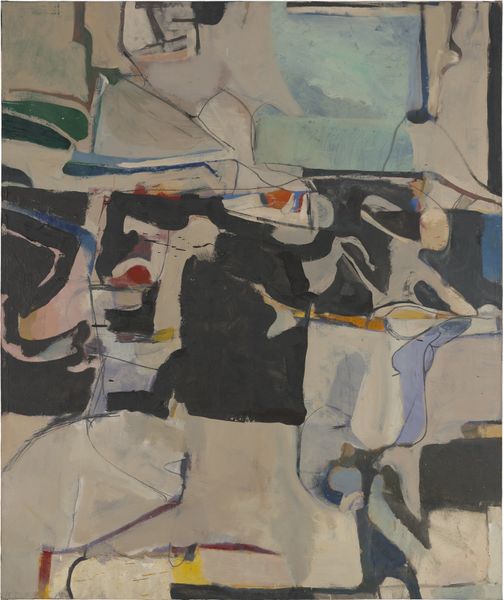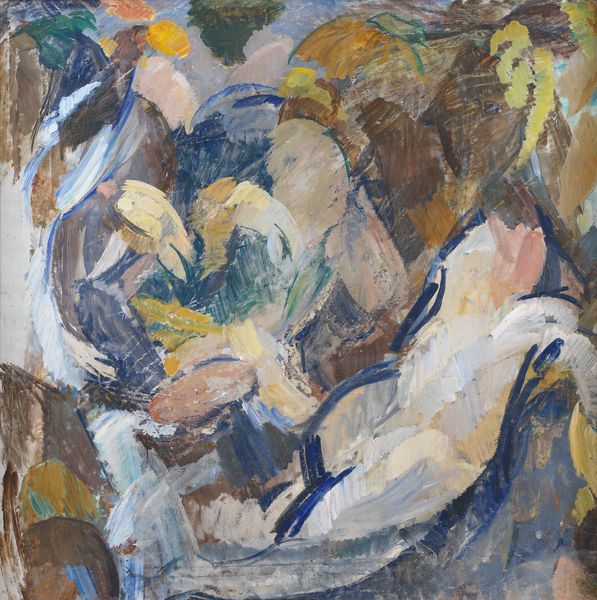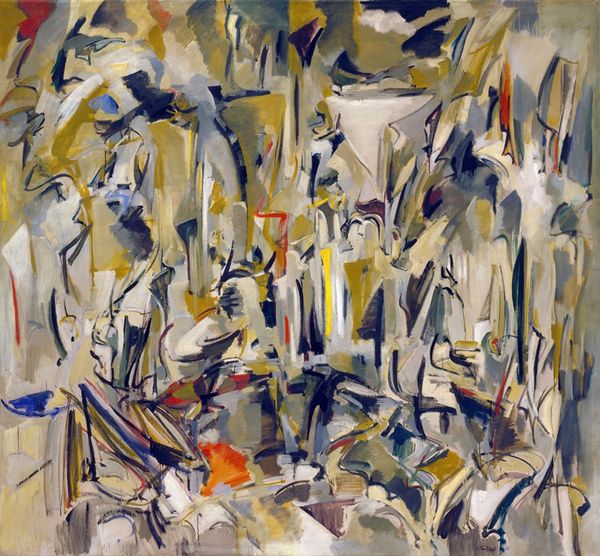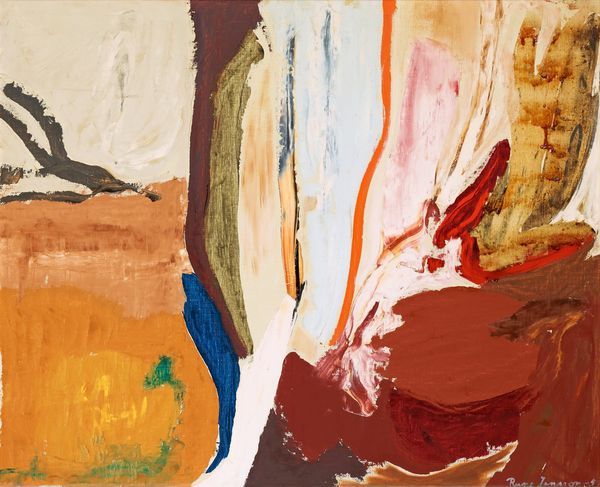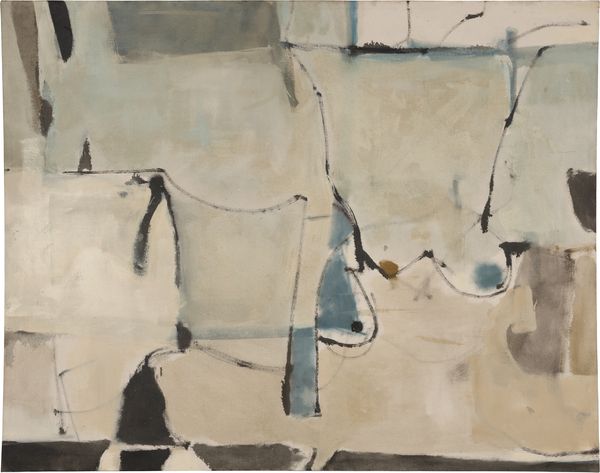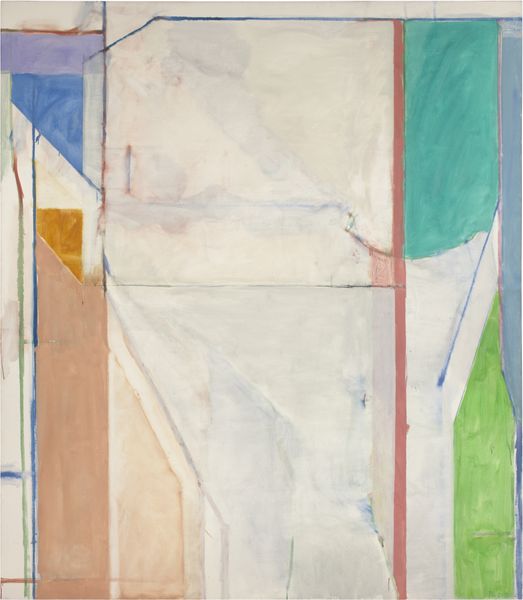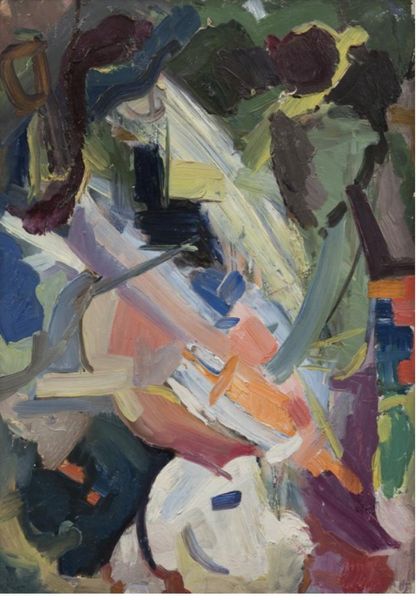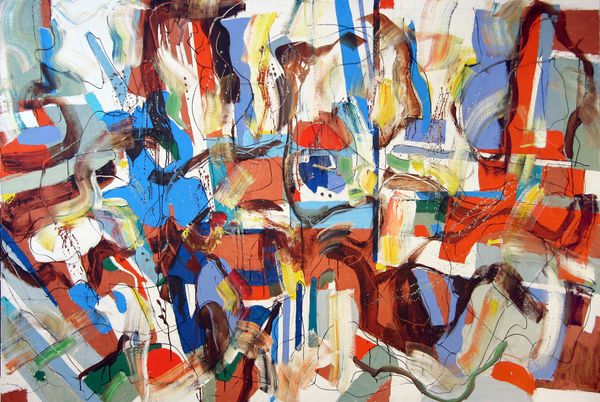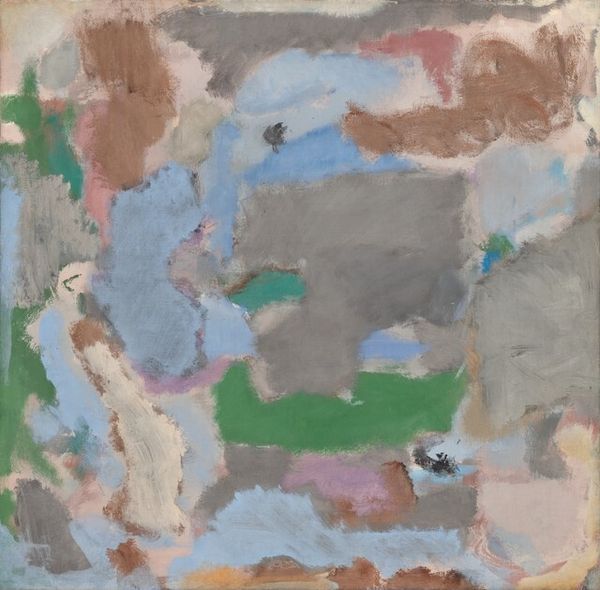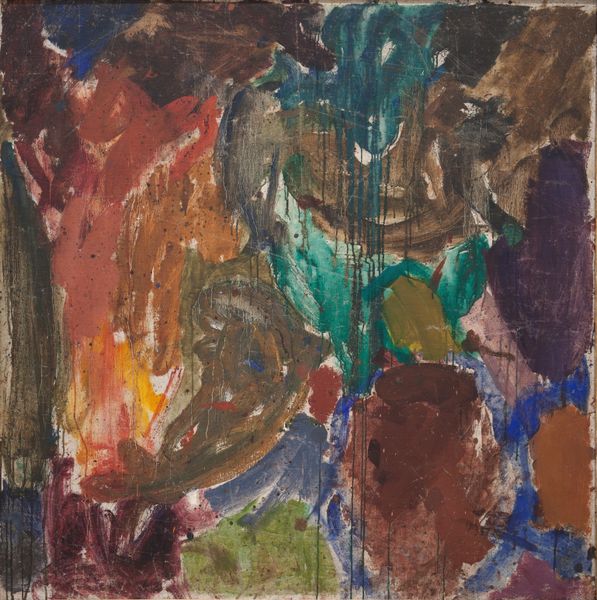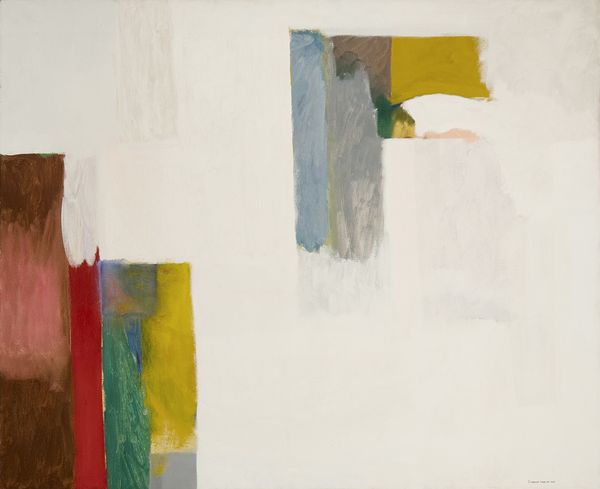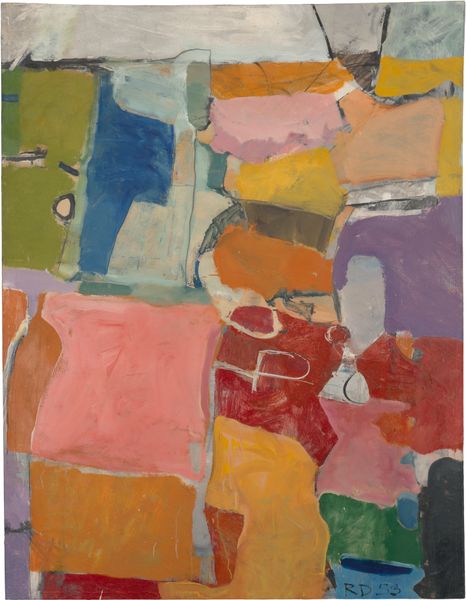
painting, oil-paint, acrylic-paint
#
abstract-expressionism
#
abstract expressionism
#
painting
#
oil-paint
#
landscape
#
acrylic-paint
#
form
#
acrylic on canvas
#
abstraction
Copyright: Lennart Rodhe,Fair Use
Curator: We’re looking at “I vattnet,” or “In the Water,” a painting created by Lennart Rodhe in 1962. Art Historian: My immediate reaction is a sense of freshness, almost like peering into a sun-dappled pond. The composition feels both chaotic and balanced. Curator: Rodhe was a significant figure in Swedish modernism. It's interesting how this piece moves between abstraction and landscape, reflecting the push and pull many artists felt navigating postwar aesthetics. The title suggests an environment, yet the forms resist clear representation, and recall Abstract Expressionism. Art Historian: The colours certainly evoke water – the blues and greens mingling, offset by the earthier browns and reds. There's a circular form towards the top right which, coupled with those vertical lines, hints at both organic growth and perhaps a reflection on the surface of water. Circles have held spiritual meanings – wholeness and life, for example – since prehistoric times. It brings a serene but strong feeling. Curator: Thinking about postwar Europe, and particularly Sweden's social democratic model, Rodhe’s abstraction can be viewed as a reflection of both individual freedom and a collective search for new visual languages after the war. Art became a place to imagine new possibilities and probe complex and often contradictory conditions. Art Historian: Absolutely, the abstraction gives license to multiple interpretations, becoming an image of constant motion, or an internal landscape. Those linear elements, like wisps, also have me thinking about Ephemerality, of things present and gone the next moment, memories… Curator: In relation to Rodhe's larger oeuvre, you can definitely recognize continuity between landscape influences, formal interest, and experimentation with the grid, challenging established social-artistic orders. It seems that the artwork speaks with more complex undertones. Art Historian: Ultimately, its power rests in that ambiguity – an open invitation to find our own reflections within its depths. Curator: A wonderful encapsulation; considering historical moment through this piece, in which experimentation could blossom as forms continued to reshape possibilities.
Comments
No comments
Be the first to comment and join the conversation on the ultimate creative platform.

